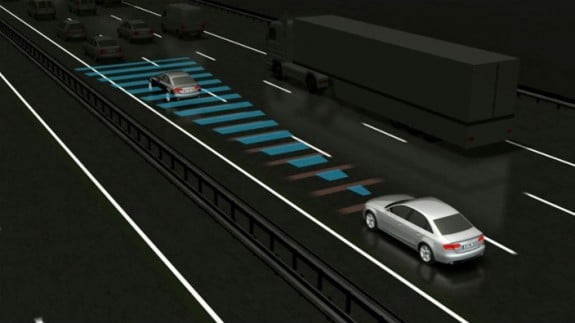Table Of Content

First and foremost, always stay attentive and be ready to take control of the vehicle when necessary. Cruise-control is fantastic, but it doesn’t replace our responsibility as drivers. If it’s raining heavily or the road is icy, it’s best to turn off cruise control and rely on manual driving. Each system has its strengths and caters to different driving needs and preferences. Tesla’s FSD Beta is at the forefront of autonomy but requires active supervision. GM’s Super Cruise excels in hands-free highway driving, while Ford’s Co-Pilot360 focuses on safety and driver assistance for everyday use.
Limitations of Cruise Control
The system uses a forward-facing camera and sensors to detect the speed and distance of the vehicle in front of the driver. If the vehicle ahead slows down or speeds up, ICC automatically adjusts the speed of the driver’s car to maintain a safe following distance. Unlike regular speed control, ICC can also bring the car to a complete stop and resume driving when the vehicle ahead starts moving again.
Chase Private Client
This electronic system is highly intuitive and drives exactly like a human driver. For example, some cars have a combined button to set the initial speed and accelerate. Others have fine-tuning buttons that you can click to increase or decrease your speed by a set amount, often one mph. Overall, the future of cruise control technology holds promise for creating a more seamless and enjoyable driving experience, with a focus on safety, comfort, and sustainability.
Res+ (Resume/Accelerate) button
The driver selects the speed, then takes their foot off the accelerator, and the vehicle will cruise at the set speed. The benefits of using the cruise control feature are better fuel efficiency and reduced foot fatigue during long drives. The system uses sensors and radar to detect the distance between the driver’s car and the vehicle ahead.
According to Scientific American, cruise control in cars has been around since the early 1900s, but it’s changed over time. Early versions were mechanical, using a second throttle lever mounted to the steering wheel. As autonomous vehicles become more sophisticated, cruise control technology is evolving to support higher levels of automation. For example, some autonomous vehicles are equipped with advanced cruise control systems that can navigate complex traffic scenarios, merge onto highways, and even change lanes autonomously.
Stop-and-go cruise control is ideal for use in heavy traffic and can bring the vehicle to a complete stop if necessary, while speed limiters are designed to limit the maximum speed of the vehicle. Each type of cruise control system has its own advantages and disadvantages, and drivers should choose the one that best suits their needs. Standard cruise control (simply called cruise control) holds your vehicle’s speed as constant as possible once set. Sometimes, cruise control disengages automatically when the vehicle’s automatic wipers detect heavy rainfall, or when a wheel spins or (briefly) leaves the surface of the road after a big bump or dip. In other situations, there may be a problem with one or more sensors or switches, including the brake pedal switch, throttle position sensor, or one or more wheel speed sensors.
Set Button
As mentioned, cruise control may become inconsistent in rainy, snowy, or otherwise hazardous conditions. If you must drive in this situation, it may be a better idea to do so manually. As you’re learning how to operate a vehicle, understanding cruise control will help increase your comfort behind the wheel and knowledge of driving. If the vehicle in the front appears suddenly and comes too close to the car, adaptive cruise control will stop the vehicle to avoid a collision.

With adaptive cruise control, problems can arise from blocked sensors or system malfunctions. Ensure that the sensors, often located in the front grille or under the mirrors, are clean and unobstructed. For system malfunctions, professional diagnostics are essential, as these systems involve advanced electronics and software. If your vehicle experiences erratic speed changes with cruise control engaged, this could indicate a problem with the throttle control system or the vehicle’s computer system. These complex issues generally require professional diagnostics and repair. Discover expert insights and practical tips on using cruise control effectively.
REVAMPED SUBARU CROSSTREK IS A STEAL OF A DEAL! - Plant City Observer
REVAMPED SUBARU CROSSTREK IS A STEAL OF A DEAL!.
Posted: Thu, 07 Mar 2024 08:00:00 GMT [source]
When they’ve released the clutch, the cruise control picks up where it left off — no additional button press required. On the latest vehicles fitted with electronic throttle control, cruise control can be integrated into the vehicle's engine management system. Modern "adaptive" systems include the ability to automatically reduce speed when the distance to a car in front, or the speed limit, decreases. Cruise control is typically designed for use on long, straight stretches of road with minimal traffic. It is not recommended for use in heavy traffic, urban driving, or in hazardous weather conditions.
Luxury automakers such as Tesla and Audi are implementing the newest rendition of cruise control on their latest vehicle models – Semi-autonomous Cruise Control. It works largely the same as adaptive cruise control, but assists drivers with lane guidance and steering. There are several variations of semi-autonomous cruise control that include additional convenience features for the driver. Adaptive cruise control (ACC) is the latest type of cruise control that’s becoming widely available in cars.
Chase online lets you manage your Chase accounts, view statements, monitor activity, pay bills or transfer funds securely from one central place. For questions or concerns, please contact Chase customer service or let us know about Chase complaints and feedback. View the Chase Community Reinvestment Act Public File for the bank’s latest CRA rating and other CRA-related information. Postmedia is committed to maintaining a lively but civil forum for discussion. You will receive an email if there is a reply to your comment, an update to a thread you follow or if a user you follow comments.
This innovative feature was designed to help drivers maintain a steady speed, reduce fatigue while driving, and improve fuel efficiency. Over the years, cruise control technology has undergone significant advancements, leading to the development of sophisticated systems like adaptive cruise control. Cruise control is an electronic system that allows the driver to set and maintain a constant speed while driving. It’s typically activated using a button or lever on the steering wheel or dashboard, and can usually be deactivated by pressing the brakes or clutch pedal. This feature is commonly found in cars, trucks, and other motor vehicles with automatic transmissions.
This includes pressing the brake, pressing a special cancel button, or moving a special switch on the steering wheel. This cancellation allows the driver to take control at any time if the situation requires it. Once the speed is set, the cruise control system will monitor the vehicle speed. If the vehicle slows down or accelerates beyond the set limits, the system will respond by adjusting the throttle opening.
Tesla under fire over 'Elon mode' that allows for hands-free driving - The Telegraph
Tesla under fire over 'Elon mode' that allows for hands-free driving.
Posted: Wed, 30 Aug 2023 07:00:00 GMT [source]
Slowing down is akin to taking your foot off the gas and won’t slow the car as fast as applying the brake. When decelerating using the cruise control, give yourself adequate time to change speeds or use the brakes to slow down and hit the “set speed” button again. Once the cruise control is active, you’ll need to use your gas or brake pedal to bring the car to the speed you want and then use the “set speed” button to lock in your speed.
Key features include automatic lane changes, stop sign and traffic light recognition, and the ability to navigate city streets. While it offers substantial automation, it still requires driver supervision and isn’t fully autonomous. This modern feature uses sensors and radar to maintain a safe distance from the vehicle ahead, adjusting speed automatically. Cruise control is safe when operated in safe driving conditions, by drivers with valid licenses who are sober and able to drive and use cruise control. Always make sure to keep your eyes on the road, your vehicle cannot make driving decisions - you'll need to step in if need be. While fully autonomous vehicles are still in the developmental stages, the integration of cruise control technology is a big step toward creating safer and more efficient transportation systems.


No comments:
Post a Comment